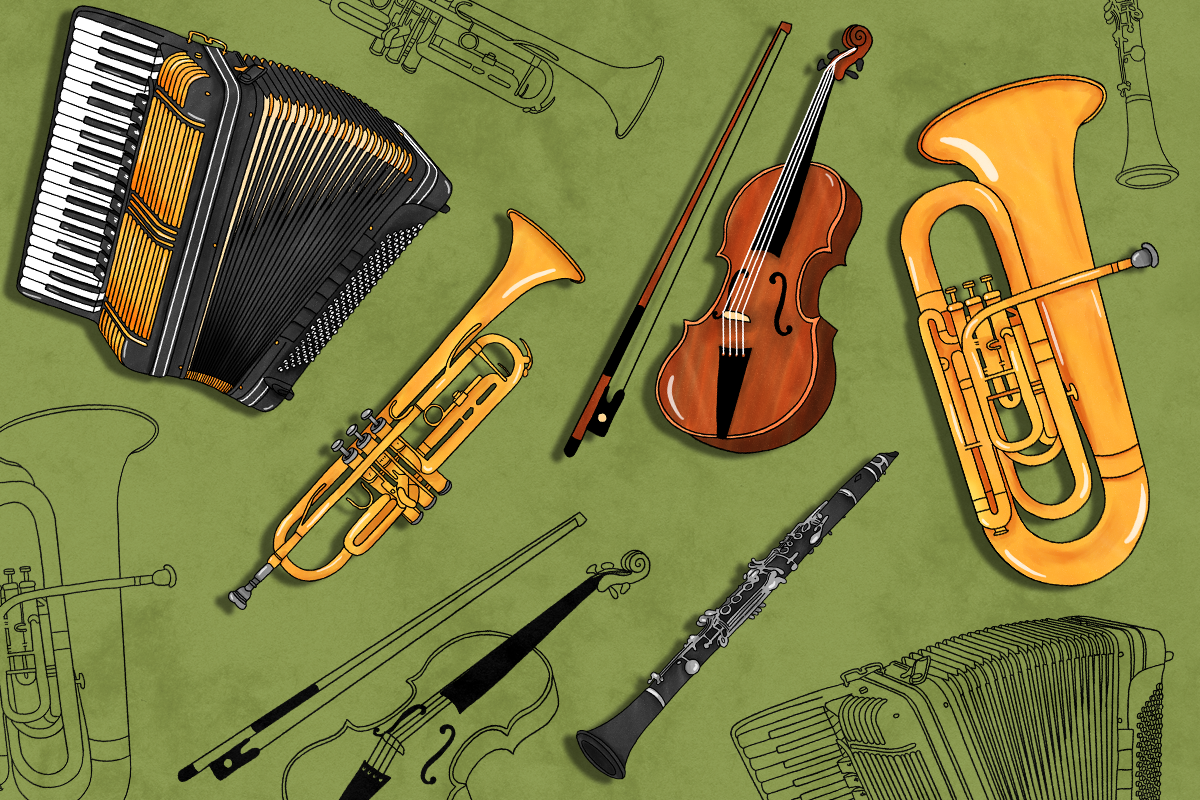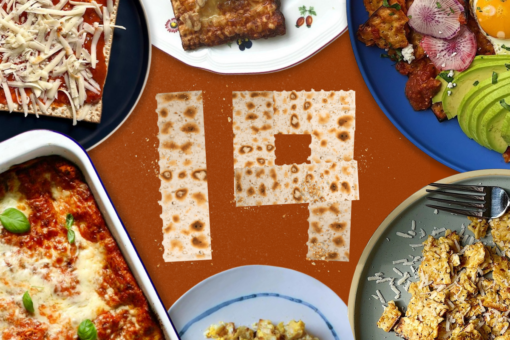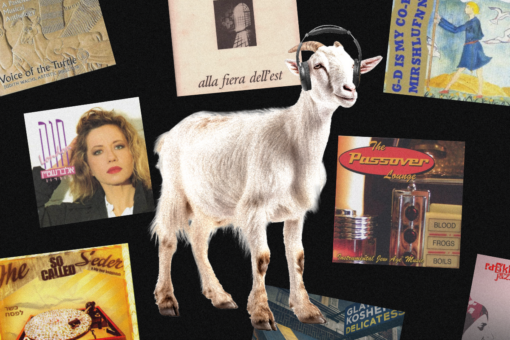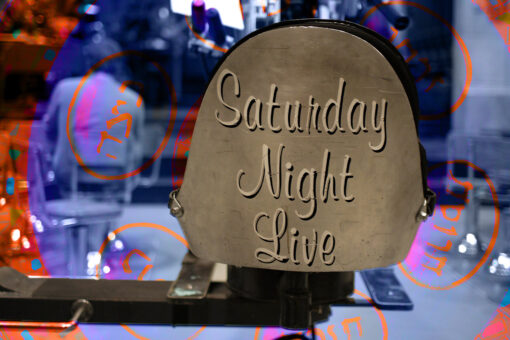Diving into the world of folk music is like finding a lost lover from another life. I first started listening to folk when I was introduced to the folk-punk-klezmer-polka eclectic extravaganza that is The Dreadnoughts. Suddenly, here were all the sounds I was missing in my life: crashing violins, tingling flutes and Eastern European instruments that make my heart thrum with their vibrancy.
I was immediately struck with questions: What are the histories of these songs, and what stories are they telling? Jewish folk music is a particular kind of magic, because it tells our stories as Jewish people.
To better talk about folk music, it will be useful to define it. As folk music is a flexible genre that encompasses many kinds of music, it can be tricky to expound. Key criteria of folk music to look for are: use of traditional sounds, instruments and languages, and references to cultural stories, identities or folklore. Beyond that, folk music can be almost anything.
The definition I like best comes from Making Music: “the music belonging to ‘the people.’” This is not music that serves the agenda of a millionaire pop-producer. It is music for the community — for sharing stories, entertaining each other, even keeping our languages alive. Traditionally, it was sung by everyone — not just trained singers — and was accompanied by self-taught musicians.
And because folk music belongs to all people, Jewish folk music belongs to Jews of all cultures. Any Jewish culture that uses sounds, language and instruments likely has its own particular genre of Jewish folk music.
If you’re yearning to hear something different, or you’re after a hit of nostalgia, now’s the time to add some Jewish folk music to your playlist. Here’s a short tour of some of the genres of Jewish folk music you can explore.
Klezmer
The word “klezmer” has roots in both Yiddish and Hebrew, meaning “instrument of singing” or “tools of melody.”
Klezmer’s primary influence is the Eastern European folk sounds it was surrounded by during its development. Sixteenth century klezmer musicians were often Jewish people working as traveling entertainers across and outside of Eastern Europe, including France, Poland, Rhineland and Ukraine, amongst others. This travel exposed klezmer to the musical repertoires of Romani people as well.
In the 20th century, klezmer entered the American mainstream via European Jewish refugees. It gained a foothold in American Jewish cultural events, cabaret and radio.
Contemporary klezmer, like many folk genres, has been internationalized and exposed to a whole host of new influences. One band to come out of this klezmer revival is KIV Orchestra. They’re a combination of French duo Vialka and Israeli band Kruzenstern i Parohod. The resulting sound is something not describable with words. You’ve got klezmer, you’ve got French and you’ve definitely got punk. It is all together electrifying.
Holocaust Songs
These songs drew on the musical repertoire of Holocaust victims to create songs of resistance, survival and emotional outlay.
Jewish people drew on Yiddish folk music and Soviet sounds to sing about their experiences. They used this medium to talk about massacres, deportations to concentration camps and hope for an end to their suffering. Perhaps unsurprisingly, there were few love songs to come out of the Holocaust, with “Tsvey Taybelekh” (“Two Little Doves”) being an exception. You can listen to an adaptation of this song by Yiddish rock band Forshpil.
Later on, children of Holocaust survivors produced songs of commemoration like Yehuda Poliker’s “Efer Veavak“ (“Ashes and Dust”). Poliker backed his heartbreaking lyrics to harmonica and guitar sounds reminiscent of American folk revival Vietnam protest songs.
From stories of horror and tragedy also came stories of survival. Third generation Holocaust survivor Max Bemis commemorates his grandparents’ survival of Treblinka in his rock song “Alive with the Glory of Love.”
Ladino Romansas
Ladino is a mix of Old Spanish with Hebrew and other regional languages from places with Sephardic Jewish communities. This community has their very own genre of ballads called romansas. Like European ballads, they are formally structured narrative poems set to music. Jews sung these romansas while doing household chores, soothing young children and during rites of passage.
“El Rey Que Muncho Madruga” is a romansa thought to be based on the adulterous wife of Burgundian King Chilperic I. The basic plot involves a king going unusually early to visit his wife. The queen can’t see the king’s face, and thinks it’s her lover, a knight. It ends with the king hinting she will be executed, by saying she and her lover will wear a “red rope,” symbolic of a hangman’s rope.
Medieval revival band Axabeba uses their custom-made medieval instruments in their rendition of “El Rey Que Muncho Madruga.” Isn’t it amazing how, with enough research, we can not only know what our ancestors sung but can also hear how they would have sung it?
Ladino Cantigas
Unlike the story-based romansas, cantigas operate on an individual level. They portray feelings like love, yearning and homesickness.
Cantigas are noted for their dynamism; they have no prescribed structure, allowing one to incorporate other cultural elements, parts of different languages, and things from different genres into them. For example, part of the Ladino song “Morenica” has a Greek phrase in it — a vestige from travels into Greek Sephardic communities.
While researching Ladino cantigas, I came upon Sephardic traditional singer Nani and her passionate rendition of “Morenica.” I was struck by how much Nani’s olive skin and deep black hair resembled that of my mother. Though we are Ashkenazi by culture, my parents will occasionally mention that we have some Spanish heritage. When I saw Nani’s face, it was brought home for me that in learning about Sephardic culture, I was getting to meet some of the ancestors who I never learned about from my family.
Israeli Folk Music
Let’s start with a not very popular genre: paraliturgical songs or piyyut. These are Hebrew poems sourced from biblical texts and religious sources, sung and set to music. These are ripe for adaptation to a whole host of different sounds and genres, as I discovered when chasing the song “Ve-David Yafeh Einayim” through time and across genres.
This journey started with Yemenite-Israeli band A-WA. They mainly sing in Yemenite Arabic, using electronic music sounds and traditional instruments. In trawling through their discography, I found their cover of “Ve-David Yafeh Einayim.” My curiosity was piqued by hearing the names David and Saul in the same song (these were the only words I understood, to be honest). To my untrained ears, it seemed like I’d found a modern pop song with a biblical source.
After much online hunting I learned that this not very ‘80s sounding song was a cover of a very much ‘80s disco Yigal Bashan song of the same name, in which the biblical kings Saul and David are reimagined as two party boys hitting the discotheque. The music video is silly and hilarious, and the song a fun jam. My half-Israeli ‘80s-loving boyfriend found it deeply affirming.
By chance, I came across another song simply called “King David” with the same chorus line as “Ve-David Yafeh Einayim.” The original lyrics are from a biblical verse from the Book of Samuel. It’s performed by Yamma Ensemble, a musical group dedicated to using traditional Jewish instruments and original languages to bring us the magic of music that sounds like it was made hundreds or even thousands of years ago. What I particularly love about Yamma Ensemble is their goal to give increased visibility to the music of lesser known Jewish cultures.
Yiddish Folk
Though closely linked with klezmer due to its Eastern European origins, Yiddish folk is defined by use of Yiddish language.
These folk songs are largely sung solo, without musical accompaniment. Common topics include historical events, Jewish life and everyday living as Jewish women. The 19th century brought industrialization and increased class struggles. With this, Yiddish folk music began to discuss grittier topics like workers’ struggles and prostitution.
Also like klezmer, Yiddish folk has been exposed to a myriad of new influences. This has created many fusion genres, including my favorite, Yiddish metal. A great band to start off your Yiddish folk/folk metal journey is Dibbukim, a band named after malevolent spirits in Jewish folklore.



